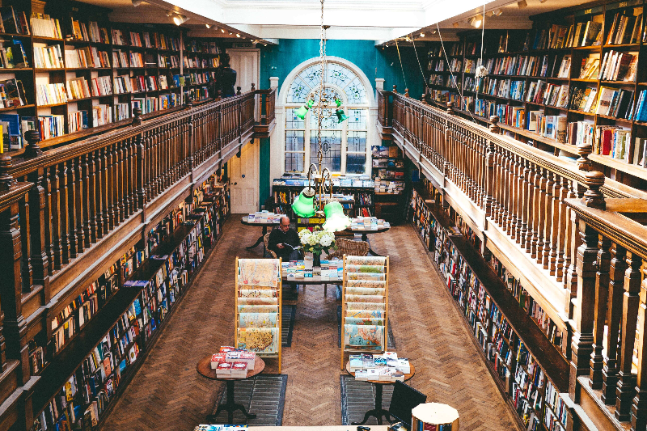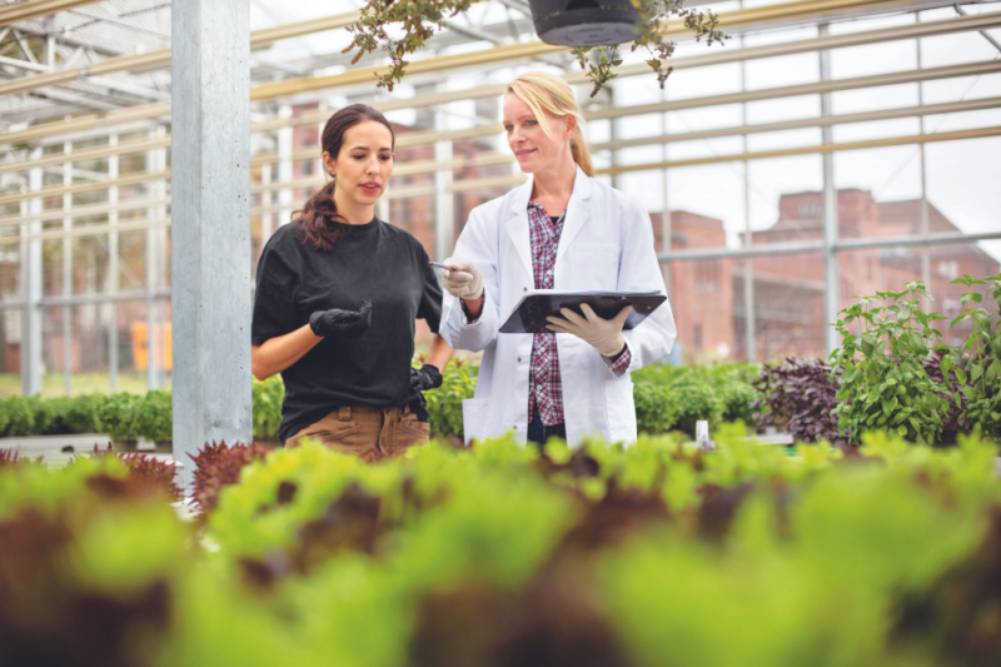8 inspiring libraries to see before you die
Libraries are everywhere. And who doesn’t love a library — a place that provides countless opportunities to explore and immerse yourself in books?
But libraries are more than just books. As stalwarts of knowledge and information, libraries serve the community in various ways. In today’s dynamic environment of rapid technological changes, libraries are the single most trusted source of information. As a public space, a library becomes an area that is open and accessible to all citizens. Libraries represent community spaces for people to come together to learn, relax and rejuvenate.
It’s in libraries that social interaction grows and user experiences are enriched in both physical spaces and through various services and activities. As such, libraries ensure that the wellbeing of the community is enhanced by promoting peace and harmony in the society.
Creating community
There’s a world of evidence out there that indicates a positive relationship between public spaces and wellbeing. Anne Bailey is a member of the Ontario Library Association (OLA) and chairs the planning committee for OLA’s Annual Institute on the Library as Place. She says, “In a world that is increasingly knowledge based and digitally connected, and with the growth of cities and densification of population, libraries play a key role in wellbeing and health.
“Social interaction in public spaces offers a relief from the daily grind by providing opportunities for people to develop bonding ties and foster a sense of belonging. This inevitably results in influencing tolerance and raising people’s spirits. People are social beings. People need to be together, to experience a sense of community — to learn, grow, collaborate and co-exist.”
“People are social beings. People need to be together, to experience a sense of community — to learn, grow, collaborate and co-exist.”
As public spaces, libraries enable people to mingle and meet new people from various cultures, fostering inter-ethnic understanding and opportunities to learn from each other. Such interactions become important and inter-cultural differences become merged in everyday life. Libraries are community laboratories, providing refuge to those who want to be alone for some “me-time” while still functioning as meeting places where people can collaborate, access knowledge and work together. This encourages strong bonds and a sense of community among people.
Connections between library staff and patrons are also an immense source of interaction and comfort, going a long way in building social capital. Such positive interactions result in people bonding with the library as an establishment — and the library becomes an integral source of wellbeing for the community.
Design matters
For social sustainability, though, the physical design of the community space is as important as the amenities and services rendered. A report by the Carnegie UK Trust in 2014 highlighted the importance of well-designed public spaces such as parks, town squares, local streets and community gardens for people’s health and wellbeing. And libraries are no different.
As Winston Churchill famously declared, “We shape our buildings, and afterwards our buildings shape us.” The community a library serves is integrated in the architecture and design of that library. This provides a spectacular convergence of rich local diversity and a safe, inclusive space for people.
Anne Bailey is now retired from the Toronto Public Library but previously managed its branch revitalisation plan in transforming library spaces and delivered world-class architecture to local neighbourhoods through 20 major projects. “Space affects how people feel, behave and co-exist,” she says. “Well-designed library spaces support a wide range of library uses. They provide options for people; and places where everyone belongs.”
Libraries are community laboratories, providing refuge to those who want to be alone for some “me-time” while still functioning as meeting places where people can collaborate, access knowledge and work together.
Traditional ideas of a library are changing with technology, user interaction and user needs. Staff at Aaron Cohen Associates, an interdisciplinary library planning firm based in New York, refer to a library as the “third space”. They say, “It provides social surroundings separate from the two usual social environments of home (‘first place’) and the workplace (‘second place’).”
This is a vital concept that guides library space planning and building design, supporting effective library use while enhancing people’s wellbeing and health. As Bailey affirms, “Space shapes feelings, regulates what we think and know. Great architecture inspires awe, which also affects behaviour.”
The “four space model” of library space planning, usually applied to new building design, allows for meaningful experiences, learning and empowerment, interaction and meeting, and innovation and creative expression, making library design very responsive to the community. But, according to Bailey, the key ingredient to incorporating the community into library building design is to involve the community itself. “Successful consultation involves listening — really listening — and dialogue [with the community], by summarising customer input and describing how the proposed design responds.”
Library space planning and design “is an art” according to Karen Latimer and Hellen Niegaard in the IFLA Library Building Guidelines, in which functionality and flexibility are guiding principles in designing libraries for the future. For these beloved institutions to stay relevant, Bailey says, “Library space planning and design must meet today’s needs while, at the same time, anticipating and paving the way to the future.”
Around the world in 8 inspiring spaces
While there are many beautiful libraries in the world with awe-inspiring architecture that dates back many centuries, a new legion of modern libraries has arisen that embrace the changing landscape — technologically, socio-economically, environmentally and culturally.
Let’s take a look at some of the world’s most unique and modern libraries.
Taiwan’s first “green” library was built to reduce the impact on the environment through sustainable design solutions and boasts of exceptionally eco-friendly architecture. It provides a peaceful sanctuary from Taiwan’s urban jungle by extending its comfortable reading areas to merge with the natural surroundings of nature, light and water.
This “Mega-Biblioteca” sits right in the middle of the most aggressive and polluted urban environments of Mexico City and is now a beacon of urban regeneration. The mega structure and surrounding botanical gardens, which encompass 26,000 square metres of endemic Mexican flora and fauna, acts as a source of education and learning just like the books and computers inside. Vasconcelos Library has been created to give an illusion of books suspended in air with translucent floor and walls, floor-to-ceiling windows and cross steel supports.
Opened in 2004, this impressive building combines futuristic visions with smart functions of a library. It was designed after much deliberation over the future of books and access of information across digital media. What resulted was a glass structure accentuated by large blocks intersecting at different levels. But from inside this magnificent building is a continuous spiral — much like a book spiral — which connects all floors, allowing a four-level access to all books and media with ease along its winding path.
Also known as the Spain Park Public Library, this ultra-modern black structure sits atop the hilly landscape of Medellin in the neighbourhood of Santo Domingo, which was plagued by violence and drug-trafficking in the 1980s. Built as part of a series of urban initiatives in the region to help the city’s poorest, Biblioteca España mainly houses various programs, resources and services that enable the community to gather and share ideas. The rock-inspired structure mimics the landscape and is seen from most parts of the city. People identify their region with it, thus developing a greater sense of belonging.
Geelong Library & Heritage Centre, Australia
This futuristic dome–like structure, also known as “the big brain”, opened its doors to the public in late 2015. Designed to resemble an eroded grotto, this library stands apart from traditional dome-roomed public library buildings — it takes the outside to the inside, with extensive glass walls and floor plans that protrude into the world outside; such as the very active first floor that serves as a cafe and meeting place, with seating that looks out over the park. Through clever space planning, this library has a specially created children’s section furnished to resemble the children’s story A Very Hungry Caterpillar and a space for older children and teenagers with a gigantic gaming screen, gaming stations, TV screens and enclosed couches. Along with plenty of books, this library is the modern embodiment of a place where social gathering, technology and learning assimilate.
Central Library of Vancouver, Canada
The design of this building was overwhelmingly approved by a public vote, even though it was not well received by the architecture community. This led to the establishment of a modern Roman Colosseum-like structure 20 years ago, and it occupies an entire block in downtown Vancouver. It’s not only the city’s central library but also the neighbourhood public library and features shops, restaurants, cafes, a parking structure, offices and a rooftop garden. At the moment, library heads are gearing up for a two-level expansion to include a seated auditorium, a sizeable landscaped public garden, cultural and exhibition spaces and a large quiet reading room based on public demand — the first for this building.
Recently named public library of the year by the International Federation of Library Associations and Institutions (IFLA), Dokk1 is Scandinavia’s largest public library. Situated on the mouth of the Arhus River, this polygonal structure is a hub for education, knowledge sharing and technology and a multicultural meeting point. There’s no dedicated entrance to Dokk1; instead, large staircases are interconnected with outdoor areas and the harbour promenade, making this glass structure an open space with an all-around view of the city, harbour and forests that flank it. Inside, the two open library levels are connected by a ramp that meanders through five platforms, each dedicated to a particular activity. Consisting of government offices, rental offices and citizen services, Dokk1 is a place where you can borrow books and media, watch films, attend talks or events, participate in gaming, use various digital media — and even collect your passport.
Bibliotheca Alexandrina, Egypt
Built on the ancient site of Alexandria’s famed library, one of the largest in the classical world, the contemporary design of the new library is timeless, capturing its essence as a centre of learning and culture. This 11-storey structure is characterised by its circular form with a glass-panelled roof that tilts toward the ocean, much like a sundial. Surrounded by a vast, open plaza and a reflecting pool, the library is shielded from the hustle of the city and connected by a footbridge to the University of Alexandria. The exterior façade is carved with letters, pictograms, hieroglyphs and symbols in both modern and ancient scripts. Cleverly designed north-facing skylights on the roof give ample sunlight to the interior but also protect books and manuscripts from damage. The highlight, though, is the vast reading room for 2000 readers — at seven stacked terraces, it’s one of the largest reading rooms in the world. Bibliotheca Alexandrina is also the only location of the backup copy of the Internet Archive’s Wayback Machine: a recorded memory of all the web pages on every website since the launch of the internet 20 years ago.
Libraries, reimagined
As beautiful as these structures may be, the word “library” doesn’t just refer to a physical space; “libraries” pop up anywhere with their own brand of community service and inventive ideas. Take, for instance, the biblioburro where baby donkeys deliver books to many rural villages in Columbia or the iconic red phone booths in Britain converted into mini libraries. Another remarkable project is the Stationsbibliotheek — a Train Station Library in the city of Haarlem in The Netherlands, which serves busy train passengers who are looking for a book to borrow for their train ride.
Then there is the global Little Free Library movement aimed at improving “curb-side literacy” and promoting a sense of community through building unique eco-friendly wooden library boxes on a pole, right in your front garden. And who doesn’t want a book to read at the beach? That’s the very reason why Herman Kompernas built a library on the beach at Albena in Bulgaria, stocked with over 2500 books in 10 languages. Another innovative service is Epos, a floating library that operates through various remote counties along the fjords of Norway. Besides books, it often brings cultural activities like musicians and performers to entertain people.
Regardless of what shape they take, as Anne Bailey says, “Libraries embody the heart and soul of a community.” They are havens where people can experience knowledge, information and interaction across well-designed physical spaces that extend into the community. A library is a place that is accessible to all, connecting people to knowledge. But, more importantly, a library is a space — whether a physical building or a service provided differently — that embodies the human spirit of co-operation and collaboration, ultimately leading to wellbeing and success of the community now and in the future.




